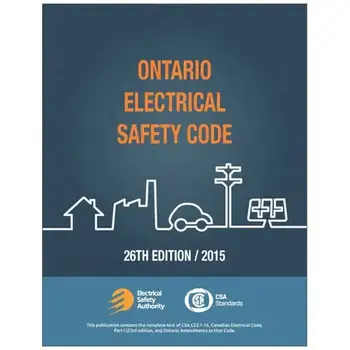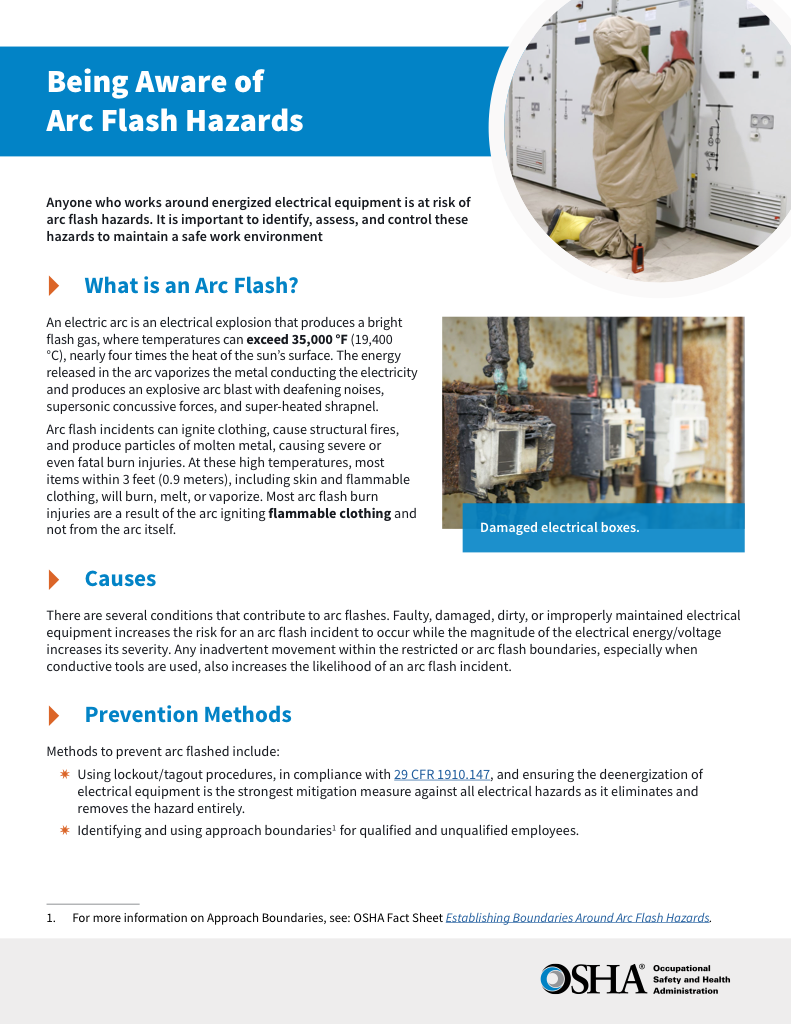Electrical Safety Ontario

NFPA 70e Training
Our customized live online or in‑person group training can be delivered to your staff at your location.

- Live Online
- 6 hours Instructor-led
- Group Training Available
Download Our OSHA 4475 Fact Sheet – Being Aware of Arc Flash Hazards

- Identify root causes of arc flash incidents and contributing conditions
- Apply prevention strategies including LOTO, PPE, and testing protocols
- Understand OSHA requirements for training and equipment maintenance
Electrical Safety Ontario 2015 covers ESA-enforced OESC updates, wiring standards, grounding and bonding rules, permits, inspections, and code compliance for residential, commercial, and industrial installations to mitigate shock, arc-fault, and fire hazards.
What Is Electrical Safety Ontario 2015?
ESA-enforced 2015 OESC rules defining code compliance, inspections, and permits for safe electrical installations.
✅ Expanded AFCI/GFCI requirements for dwelling and feeder circuits
✅ Grounding, bonding, and fault-current path verification standards
✅ Permit, notification, and ESA inspection workflows for all installations
Electrical Safety in Ontario is a major concern for law makers and citizens, employers and employees. Ontario’s electrical safety watchdog, the Electrical Safety Authority (ESA), tracks electrical accidents and penalizes companies in violation of the Ontario Electrical Code, the province’s rules and regulations that protect the province’s workers from electrical accidents. Electrocutions in the workplace in the last ten years account for 60 per cent.
For a broader overview of best practices and current risks, the resources at electrical safety can help contextualize these Ontario trends.
Electrical Safety Ontario – Electrical Mortality Rates
In a report, the Electrical Safety Authority (ESA) has determined that 70 per cent of the electrical safety injuries that occur in Ontario happen in five areas. In the last ten years, 49 per cent of all electrocutions (fatal electric shocks) happen due to human contact with power lines. Since then, there have been at least 1,000 cooking fires from electric stove-tops that resulted. Electrocutions in the workplace make up 60 per cent of the total number of electrocutions in the last 10 years. Most of these electrical fatalities and injuries are from working on live electric panels. ESA’s Ontario Electrical Safety Report indicates that fatalities resulting from electrical fire have declined 56 per cent in the last decade. According to that same report, electrocution rates have dropped to 43 per cent in the last 10 years. For more on ESA oversight, see how the Electrical Safety Authority investigates incidents and promotes compliance.
Test Your Knowledge About Arc Flash!
Think you know Arc Flash? Take our quick, interactive quiz and test your knowledge in minutes.
- Instantly see your results and score
- Identify strengths and areas for improvement
- Challenge yourself on real-world electrical topics
These figures mirror patterns seen in many plants and facilities, where guidance on industrial electrical safety emphasizes lockout, verification, and task planning.
Electrical Safety Ontario – Employees
The Electrical Safety Authority’s primary targets for improving Ontario’s electrical safety include: reducing contact with power lines, lowering electrical accidents and incidents to Ontario’s electrical workers, and reducing situations that come from misusing electrical products, using unapproved electrical products, or using electrical counterfeit products. ESA’s secondary targets for improving Ontario’s electrical safety include: implementing safety regulation for installation, design and maintenance of street lights, reducing incidents that comes from aging electrical equipment, improve safety regulations on 347-volt systems, addressing issues concerning electrical devices and bathtubs, among others. Organizations can also consult guidance on selecting and verifying electrical safety products to reduce hazards from counterfeits and misuse.
Understanding evolving electrical safety regulation helps align procurement and maintenance policies with ESA priorities.
Electrical Safety Ontario – ESA Mandate
ESA has a mandate to regulate the safe use of electricity and equipment in Ontario. It also enforces the Ontario Electrical Safety Code, and appoints Electrical Inspectors. It believes that its mandate is there to ensure that:
Detailed requirements are compiled in the Ontario Electrical Safety Code, guiding inspections and installations.
- Electrical workers and non electrical workers have the highest level of technical and service knowledge about the hazards of electricity in the workplace.
- The best technical expertise is accessed to define and modify electrical standards.
- Programs and services meet customer needs and are delivered in an effective and efficient manner.
- Systems and processes are updated to respond to changing technology.
- Information sources are clearly defined to assist in assessing public safety needs and priorities.
- Ongoing consultation with all stakeholders.
- New electrical safety opportunities are vigorously pursued.
- Safety partnerships are developed to extend the reach of important safety messages.
Electrical Safety Ontario – Infrastructure Healh and Safety Association
The Infrastructure Healh and Safety Association (IHSA) was created in 2010 by merging the Construction Safety Association of Ontario (CSAO), the Electrical & Utilities Safety Association of Ontario (EUSA), and the Transportation Health and Safety Association of Ontario (THSAO). The Infrastructure Health & Safety Association (IHSA) works with employers and workers in Ontario to eliminate electrical injury and illness. IHSA training often reinforces safe job planning and energized work controls outlined under electrical safety work methods for field crews.








